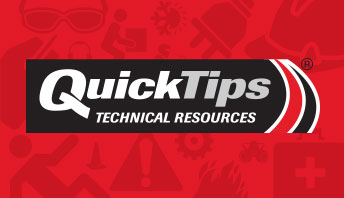

ISO 45003 Safety Standard on Psychosocial Risk
By Grainger Editorial Staff 7/26/21


In June 2021, the International Organization for Standardization (ISO) published ISO 45003, which provides guidance for mitigating mental health risks in the workplace and puts mental health within the scope of environment, health and safety (EHS) management.
ISO 45003 is part of the organization's series of occupational health and safety standards, which includes ISO 45001 as the overarching standard with which organizations can pursue certified compliance. ISO is not a governmental agency, and compliance with its standards is not a legal requirement. However, many EHS experts believe that the global consensus standards published by ISO provide valuable best practices for protecting workers’ health and safety, and ISO certification can send a signal to employees, clients and customers, demonstrating the organization's focus on its workers’ health and safety.
The new ISO 45003 standard recognizes that employers are responsible for protecting not just the physical health of their employees, but the psychosocial health as well. This means managing psychosocial risks, which are defined by ISO 45003 as risks related to how work is organized.
What do psychosocial risks look like in practice? Ineffective communication, excessive pressure, poor leadership and poor organizational culture are cited by ISO as some of the many areas that can influence workers' psychological health. These risks can lead to burnout, other poor mental health outcomes and unhealthy behaviors including substance abuse. There is also research connecting psychosocial risk factors with poor physical health outcomes, including musculoskeletal disorders (MSDs).
And there's more at stake than individual health, as important as that is. According to ISO, psychosocial risks can also lead to poor organizational outcomes, including higher costs associated with absenteeism, turnover, defects in product or service quality and damage to the organization’s reputation. Meanwhile, effective management of psychosocial risk can improve engagement, productivity and innovation. ISO 45003 offers guidance on how organizations can identify, assess and control psychosocial risks within the framework of an occupational health and safety management system.
What Can You Do to Manage Psychosocial Risks?
ISO 45003 gives practical examples of psychosocial risk control measures addressing three categories of hazard:
- Work organization
- Social factors
- Work environment, equipment and hazardous tasks
ISO's examples control measures for psychosocial risks involving work organization include:
- Giving employees more control over how they do their work, using strategies such as job-sharing or allowing employees to set the pace of tasks
- Clearly defining roles, supervision relationships and performance requirements to minimize confusion and ambiguity
- Allowing tasks to be prioritized and completed within flexible time frames
- Enabling workers to develop competence
- Assigning tasks to workers whose knowledge, skills and experience are suited to the task
- Ensuring that workers have guidance, effective supervision and constructive feedback
- Providing support during peak workload periods
ISO's examples of control measures for psychosocial risks involving social factors include:
- Training workers on how to identify psychosocial risks, how to report them and how to recognize early signs of work-related stress
- Demonstrating the commitment to maintaining a supportive and respectful work environment
- Supporting workers who are negatively affected by exposure to psychosocial risks
- Developing policies and guidance setting out expected behaviors and describing how unacceptable work behavior will be managed
- Informing workers about their rights and responsibilities
- Improving the workplace culture through programs supporting community engagement, environmental sustainability and social responsibility
ISO's examples of control measures for psychosocial risks involving work environment, equipment and hazardous tasks include:
- Providing the appropriate equipment for doing the work, and maintaining and improving equipment as needed
- Using engineering controls to isolate or protect workers from hazards such as noise, vibration and dangerous temperatures
- Providing and requiring the use of personal protective equipment (PPE) where there are risks that can't be controlled through more effective measures
According to ISO's guidance, hazards should be evaluated and addressed in a holistic manner, and employee well-being should become a quality metric that is adopted by—rather than imposed upon—the organization’s workforce. The new standard is meant to ensure that mental and physical health risks are addressed using the same comprehensive, proactive approach.
The information contained in this article is intended for general information purposes only and is based on information available as of the initial date of publication. No representation is made that the information or references are complete or remain current. This article is not a substitute for review of current applicable government regulations, industry standards, or other standards specific to your business and/or activities and should not be construed as legal advice or opinion. Readers with specific questions should refer to the applicable standards or consult with an attorney.







